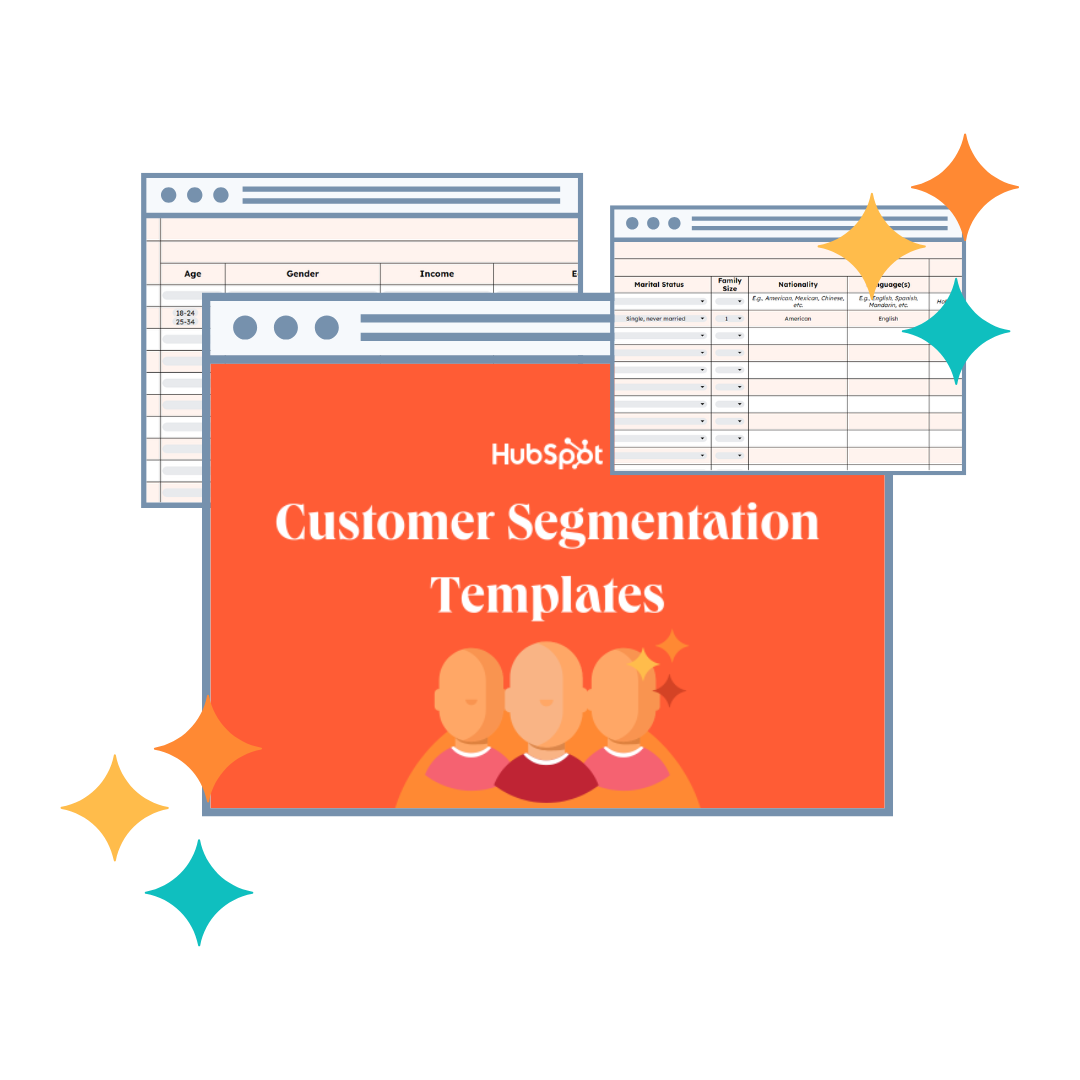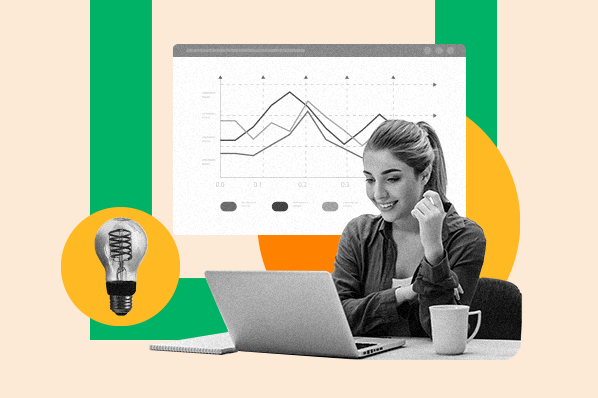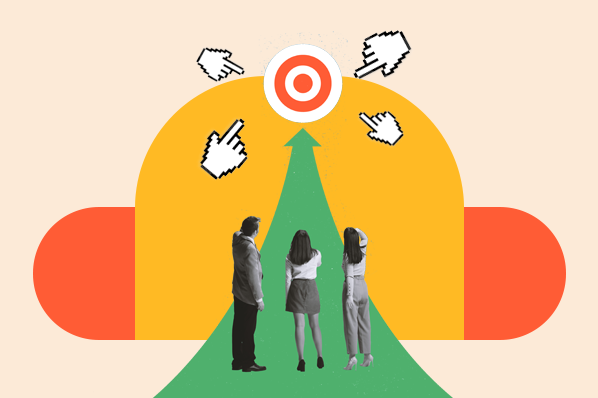In this post, we will go over:
- What is behavioral segmentation
- Why marketers need behavioral segmentation
- Four types of behavioral segmentation
- Behavioral segmentation examples
With behavioral segmentation, marketers can gain a more comprehensive understanding of their audience’s motivations and needs, resulting in better tailoring of products and services to their customers.
Behavioral segmentation is interesting because it intersects with psychology — when we think about how someone behaves and why, we naturally think about their psychological motivations.
However, behavioral segmentation is distinct from psychographic segmentation.
Psychographic segmentation is rooted in lifestyles, interests, values, and even personality traits. Behavioral segmentation is about how a customer interacts with a brand and their products or services.
For example, marketers can segment people based on website behaviors like clicks, page views, social shares, and media plays.
Why Marketers Need Behavioral Segmentation
Marketers need behavioral segmentation for learning about how prospects and customers are likely to use the business’ products and services and their level of engagement. Behavioral segmentation also fosters cross-functional collaboration between the marketing and product teams, helping them align messaging.
Identify Engaged Users
Behavioral segmentation helps marketers identify the most engaged users. It would be a waste of marketing budget and time to try to engage cold leads. By analyzing behavior like opens and clicks, marketers can cut through the noise and allocate efforts to engaging users who are already interested and likely to convert.
Personalize User Experiences With Your Brand

HubSpot’s Behavioral Targeting tool helps you personalize messages.
Generic messages will not get the goods. Providing personalized experiences will go a long way for your brand. Behavioral segmentation helps you learn about your audience’s needs, enabling you to customize your messaging so that you’re making relevant offers. Tools like HubSpot’s Behavioral Targeting tool can help by enabling marketers to personalize marketing outreach at scale.
Retain Customers
You’ve done all the hard work converting leads into customers. Now how do you retain them?
Behavioral segmentation helps businesses retain customers because marketers know how to personalize the experience to different users. Tailoring experiences so that users feel like their needs are being prioritized increases customer loyalty.
Four Types of Behavioral Segmentation
1. Purchasing Behavior
Look at a customer's purchase behavior and transaction history. This provides insight into how and why they decide to convert as well as which stages of the buyer's journey go smoothly whereas where a prospect may come to a bit of a roadblock along the way. It also gives you an idea of which behaviors are likely to accurately predict a conversion.
2. Benefits Sought
Identify what your customers are looking to get out of your product or service — of all of your features, which do they need most to resolve the challenge(s) that they're experiencing? What specific benefits do they get out of your product and which of those benefits are most important to them? Determine which of those benefits are influencing their decision to use your product/service most.
3. Buyer Journey Stage
Understanding which stage of the customer journey leads to the most conversions or which stage prospects get hung up on most frequently is beneficial information when predicting behavior and segmenting customers based on those behaviors. However, it's important to note that using customer journey stages in behavioral segmentation can be difficult because there are so many stages — and within those stages are multiple touch points that contribute to behavior or decision to remain in a stage or move forward to a new stage, of the buyer's journey. That's why it's recommended to use a platform like your CRM or an AI/machine learning tool — they record and track all interactions throughout the buyer's journey to ensure you're getting a complete view of your customer's buyer's journey behavioral data.
4. Usage
Usage-based segmentation enables you to segment your customers based on how they actually use the product or service, how frequently they use it, how long they use it in a single session, or which features they use most.
For example, if you sell software, you might choose to segment your customers further into more specific usage categories — for instance, heavy users versus average users versus light users. Then, heavy-user messaging could highlight advanced features and upselling campaigns, while low-usage messaging could encourage more usage by discussing the key program features or how to use them.
Behavioral Segmentation Examples
1. Occasion
-1.webp?width=624&height=351&name=pasted%20image%200%20(1)-1.webp)
In 2020, Taco Bell launched a taco e-gifting service in time for the holidays. (Image Source)
Was it a specific occasion that influenced your customer's decision to convert? Is a purchase decision based on the time of day or even life stage
Occasion-based segmentation can help cater your messaging to a specific point in time during the year when certain audiences interact with your brand.
For example, if you're an online greeting card service, you may get repeat customers around the winter holiday season every year. For those customers, your Q4 messaging could amp up holiday deals and offers.
2. Customer Loyalty
-1.webp?width=417&height=693&name=pasted%20image%200%20(2)-1.webp)
Starbucks Rewards offers customers perks. (Image Source)
Customer loyalty provides a solid look at customer behavior — loyalty relates directly to a customer's habits, actions, needs, usage, and the timing of their actions.
To use customer loyalty when segmenting customers based on behavior, think about:
- Which parts of the buyer's journey are so delightful that they result in loyalty?
- How you currently keep loyal customers feeling delighted.
- Which prospects are most likely to become loyal?
- Which attributes do your loyal customers share?
3. Engagement

Sephora offers unique benefits for highly engaged customers. (Image Source)
Engagement refers to the type and frequency of interactions you see from certain customers.
These interactions can include site views, clicks, and social media activity. You might segment your customers based on high engagement versus average engagement versus occasional engagement.
Highly engaged individuals are those who've incorporated your brand into their lives regularly. Average users may engage with your brand or product/ service fairly regularly but may not take advantage of its full potential and capabilities.
Occasional users may just engage with your brand or product/service randomly based on their specific need but don't rely on it. For example, Sephora offers a community for BeautyINSIDER members.
Grow Better With Behavioral Segmentation
Behavioral segmentation is critical to your business’ success in identifying and understanding target audiences, and tailoring your marketing strategy accordingly. It helps drive leads, convert them into customers, and increase brand loyalty.
Be sure to keep behavioral segmentation variables in mind and incorporate a tool like HubSpot for further support throughout the process.
Marketing Operations










